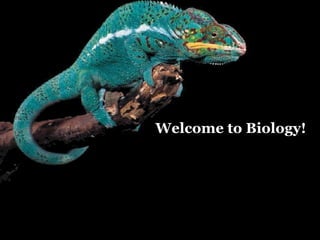Nature of Science (2010-11)
•Transferir como PPT, PDF•
0 gostou•410 visualizações
Denunciar
Compartilhar
Denunciar
Compartilhar

Recomendados
Recomendados
Mais conteúdo relacionado
Destaque
Destaque (8)
Semelhante a Nature of Science (2010-11)
Semelhante a Nature of Science (2010-11) (20)
2. Introduction to Science The Scientific Method (Presentation) Author Plainv...

2. Introduction to Science The Scientific Method (Presentation) Author Plainv...
Mais de Stacy Baker
Mais de Stacy Baker (20)
Phylum Chordata - Class Reptilia, Aves, and Mammalia

Phylum Chordata - Class Reptilia, Aves, and Mammalia
Multiple Alleles, Sickle Cell Evolution, Pedigrees, & Sex Linkage

Multiple Alleles, Sickle Cell Evolution, Pedigrees, & Sex Linkage
Nature of Science (2010-11)
- 2. Describe the natural world To seek natural explanations for natural phenomena. What do Scientists Actually Do?
- 3. Make Observations – use the senses to gather and record information Collect Data – recorded observations Scientists…
- 4. There are two kinds of data: Quantitative – recorded measurements “ Quantity” counting charts graphs measuring numbers DATA
- 5. Qualitative – written descriptions “ The chimpanzees use sticks as tools to capture termites out of their nests and eat them.”
- 6. Inference – logical conclusion based on observations Making Inferences
- 8. Homework: General: Read section 1.3 & answer questions 1-5 Honors: Read sections 1.7-1.8, 3-2-1 the sections, & explain why the snake experiment is a controlled experiment Signed syllabus due Monday
